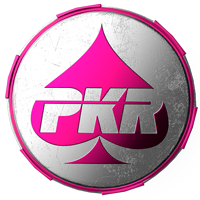Bitget: Top 4 toàn cầu về khối lượng giao dịch hàng ngày!
Thị phần BTC62.54%
Niêm yết mới trên Bitget : Pi Network
BTC/USDT$85549.85 (+2.73%)Chỉ số Sợ hãi và Tham lam45(Trung lập)
Chỉ số altcoin season:0(Bitcoin season)
Coin được niêm yết trên Thị trường sớmPAWS,WCTTổng dòng tiền ròng Bitcoin spot ETF -$1M (1 ngày); -$872.6M (7 ngày).Gói quà chào mừng dành cho người dùng mới trị giá 6200 USDT.Nhận ngay
Giao dịch mọi lúc, mọi nơi với ứng dụng Bitget. Tải xuống ngay
Bitget: Top 4 toàn cầu về khối lượng giao dịch hàng ngày!
Thị phần BTC62.54%
Niêm yết mới trên Bitget : Pi Network
BTC/USDT$85549.85 (+2.73%)Chỉ số Sợ hãi và Tham lam45(Trung lập)
Chỉ số altcoin season:0(Bitcoin season)
Coin được niêm yết trên Thị trường sớmPAWS,WCTTổng dòng tiền ròng Bitcoin spot ETF -$1M (1 ngày); -$872.6M (7 ngày).Gói quà chào mừng dành cho người dùng mới trị giá 6200 USDT.Nhận ngay
Giao dịch mọi lúc, mọi nơi với ứng dụng Bitget. Tải xuống ngay
Bitget: Top 4 toàn cầu về khối lượng giao dịch hàng ngày!
Thị phần BTC62.54%
Niêm yết mới trên Bitget : Pi Network
BTC/USDT$85549.85 (+2.73%)Chỉ số Sợ hãi và Tham lam45(Trung lập)
Chỉ số altcoin season:0(Bitcoin season)
Coin được niêm yết trên Thị trường sớmPAWS,WCTTổng dòng tiền ròng Bitcoin spot ETF -$1M (1 ngày); -$872.6M (7 ngày).Gói quà chào mừng dành cho người dùng mới trị giá 6200 USDT.Nhận ngay
Giao dịch mọi lúc, mọi nơi với ứng dụng Bitget. Tải xuống ngay



Giá OneFinityONE
Chưa niêm yết
Coin định giá:
VND
Dữ liệu được lấy từ nhà cung cấp bên thứ ba. Trang này và thông tin được cung cấp không xác nhận cho bất kỳ loại tiền điện tử cụ thể nào. Bạn muốn giao dịch các coin đã niêm yết? Nhấp vào đây
₫1,094.19+1.10%1D
Giá
Biểu đồ giá OneFinity (ONE/VND)
Cập nhật mới nhất vào 2025-04-13 01:40:44(UTC+0)
Vốn hóa thị trường:₫4,783,388,621.38
Vốn hóa thị trường pha loãng hoàn toàn:₫4,783,388,621.38
Khối lượng (24h):₫1,170,984.84
Khối lượng 24h / Vốn hóa thị trường:0.02%
Giá cao 24h:₫1,100.69
Giá thấp 24h:₫1,082.3
Cao nhất mọi thời đại:₫22,156.6
Thấp nhất mọi thời đại:₫858.55
Nguồn cung lưu hành:4,371,636 ONE
Tổng nguồn cung:
25,543,088ONE
Tỷ lệ lưu hành:17.00%
Nguồn cung tối đa:
25,546,534ONE
Giá bằng BTC:0.{6}4970 BTC
Giá bằng ETH:0.{4}2597 ETH
Giá khi bằng vốn hóa thị trường BTC:
₫9,997,754,096.53
Giá khi bằng vốn hóa thị trường ETH:
₫1,163,218,412.62
Hợp đồng:
ONE-f9...-f9954f(Elrond)
Bạn cảm thấy thế nào về OneFinity hôm nay?
Lưu ý: Thông tin này chỉ mang tính chất tham khảo.
Giá OneFinity bằng VND hôm nay
Giá OneFinity trực tiếp hôm nay là ₫1,094.19 VND với vốn hóa thị trường hiện tại là ₫4.78B. Giá OneFinity tăng 1.10% trong 24 giờ qua và khối lượng giao dịch trong 24 giờ là ₫1.17M. Tỷ lệ chuyển đổi ONE/VND (OneFinity sang VND) được cập nhật theo thời gian thực.
Lịch sử giá OneFinity (VND)
Giá của OneFinity là -88.04% trong năm qua. Giá cao nhất của tính bằng VND trong năm ngoái là ₫10,512.66 và mức giá thấp nhất của tính bằng VND trong năm ngoái là ₫858.55.
Thời gianBiến động giá (%) Giá thấp nhất
Giá thấp nhất Giá cao nhất
Giá cao nhất 
 Giá thấp nhất
Giá thấp nhất Giá cao nhất
Giá cao nhất 
24h+1.10%₫1,082.3₫1,100.69
7d+1.20%₫858.55₫1,100.69
30d-31.73%₫858.55₫2,098.39
90d-64.45%₫858.55₫3,841.6
1y-88.04%₫858.55₫10,512.66
Tất cả thời gian-51.23%₫858.55(2025-04-07, 6 ngày trước )₫22,156.6(2024-03-14, 1 năm trước )
Giá cao nhất của OneFinity là bao nhiêu?
Giá cao nhất mọi thời đại (ATH) của OneFinity bằng VND là ₫22,156.6, được ghi nhận vào 2024-03-14. So với ATH OneFinity, giá hiện tại của OneFinity đã giảm 95.06%.
Giá thấp nhất của OneFinity là bao nhiêu?
Giá thấp nhất mọi thời đại (ATL) của OneFinity bằng VND là ₫858.55, được ghi nhận vào 2025-04-07. So với ATL OneFinity, giá hiện tại của OneFinity đã tăng 27.45%.
Dự đoán giá OneFinity
Khi nào là thời điểm thích hợp để mua ONE? Tôi hiện nên mua hay bán ONE?
Khi quyết định mua hay bán ONE, trước tiên bạn phải xem xét chiến lược giao dịch của mình. Hoạt động giao dịch của các nhà giao dịch dài hạn và nhà giao dịch ngắn hạn cũng sẽ khác nhau. Phân tích kỹ thuật Bitget ONE có thể cung cấp cho bạn tài liệu tham khảo cho giao dịch.
Theo Phân tích kỹ thuật 4 giờ của ONE, tín hiệu giao dịch là Mua.
Theo Phân tích kỹ thuật 1 ngày của ONE, tín hiệu giao dịch là Bán.
Theo Phân tích kỹ thuật 1 tuần của ONE, tín hiệu giao dịch là Bán.
Giá của ONE vào năm 2026 sẽ là bao nhiêu?
Dựa trên mô hình dự đoán hiệu suất giá lịch sử của ONE, giá ONE dự kiến sẽ đạt ₫1,446.73 vào năm 2026.
Giá của ONE vào năm 2031 sẽ là bao nhiêu?
Trong năm 2031, giá ONE dự kiến sẽ thay đổi +3.00%. Đến cuối năm 2031, giá ONE dự kiến sẽ đạt ₫3,841.34 với ROI tích lũy là +250.32%.
Câu Hỏi Thường Gặp
Giá hiện tại của OneFinity là bao nhiêu?
Giá trực tiếp của OneFinity là ₫1,094.19 cho mỗi (ONE/VND) với vốn hóa thị trường hiện tại là ₫4,783,388,621.38 VND. Giá trị của OneFinity trải qua những biến động thường xuyên do hoạt động liên tục 24/7 trên thị trường tiền điện tử. Giá hiện tại của OneFinity trong thời gian thực và dữ liệu lịch sử khả dụng trên Bitget.
Khối lượng giao dịch 24 giờ của OneFinity là bao nhiêu?
Trong 24 giờ qua, khối lượng giao dịch của OneFinity là ₫1.17M.
Giá cao nhất mọi thời đại của OneFinity là bao nhiêu?
Giá cao nhất mọi thời đại của OneFinity là ₫22,156.6. Mức giá cao nhất mọi thời đại này là mức giá cao nhất của OneFinity kể từ khi ra mắt.
Liệu tôi có thể mua OneFinity trên Bitget?
Có, OneFinity hiện đang khả dụng trên sàn giao dịch tập trung của Bitget. Để biết thêm chi tiết, vui lòng xem qua hướng dẫn Hướng dẫn mua của chúng tôi.
Tôi có thể nhận được thu nhập ổn định khi đầu tư vào OneFinity không?
Như mọi người đều biết, Bitget cung cấp nền tảng giao dịch chiến lược, với các bot giao dịch thông minh để tự động hóa các giao dịch của bạn và kiếm lợi nhuận.
Tôi có thể mua OneFinity ở đâu với mức phí thấp nhất?
Chúng tôi vui mừng thông báo nền tảng giao dịch chiến lược hiện đã có mặt trên sàn giao dịch Bitget. Bitget cung cấp mức phí giao dịch và độ sâu tốt hàng đầu trong ngành để đảm bảo lợi nhuận cho các khoản đầu tư của nhà giao dịch.
OneFinity nắm giữ theo mức độ tập trung
Whale
Investor
Retail
Địa chỉ OneFinity theo thời gian nắm giữ
Holder
Cruiser
Trader
Biểu đồ giá coinInfo.name (12) trực tiếp

Giá OneFinity toàn cầu
Giá trị của OneFinity bằng các loại tiền tệ khác hiện tại là bao nhiêu? Cập nhật mới nhất: 2025-04-13 01:40:44(UTC+0)
ONE đến MXN
Mexican Peso
$0.86ONE đến GTQGuatemalan Quetzal
Q0.33ONE đến CLPChilean Peso
$41.86ONE đến UGXUgandan Shilling
Sh155.81ONE đến HNLHonduran Lempira
L1.1ONE đến ZARSouth African Rand
R0.81ONE đến TNDTunisian Dinar
د.ت0.13ONE đến IQDIraqi Dinar
ع.د55.54ONE đến TWDNew Taiwan Dollar
NT$1.38ONE đến RSDSerbian Dinar
дин.4.38ONE đến DOPDominican Peso
$2.64ONE đến MYRMalaysian Ringgit
RM0.19ONE đến GELGeorgian Lari
₾0.12ONE đến UYUUruguayan Peso
$1.84ONE đến MADMoroccan Dirham
د.م.0.39ONE đến OMROmani Rial
ر.ع.0.02ONE đến AZNAzerbaijani Manat
₼0.07ONE đến KESKenyan Shilling
Sh5.49ONE đến SEKSwedish Krona
kr0.41ONE đến UAHUkrainian Hryvnia
₴1.76- 1
- 2
- 3
- 4
- 5
Niêm yết mới trên Bitget
Niêm yết mới
Mua thêm
Tôi có thể mua tiền điện tử ở đâu?
Mua tiền điện tử trên ứng dụng Bitget
Đăng ký trong vòng vài phút để mua tiền điện tử bằng thẻ tín dụng hoặc chuyển khoản ngân hàng.
Mục video — xác minh nhanh, giao dịch nhanh

Cách hoàn tất xác minh danh tính trên Bitget và bảo vệ bạn khỏi gian lận
1. Đăng nhập vào tài khoản Bitget của bạn.
2. Nếu bạn chưa quen với Bitget, hãy xem hướng dẫn của chúng tôi về cách tạo tài khoản.
3. Di chuột qua biểu tượng hồ sơ của bạn, nhấp vào "Chưa xác minh" và nhấn "Xác minh".
4. Chọn quốc gia hoặc khu vực phát hành và loại ID của bạn, sau đó làm theo hướng dẫn.
5. Chọn "Xác minh Di động" hoặc "PC" dựa trên sở thích của bạn.
6. Nhập thông tin chi tiết của bạn, gửi bản sao giấy tờ tùy thân và ảnh selfie.
7. Gửi đăng ký của bạn và chúc mừng, bạn đã hoàn tất xác minh danh tính!
Đầu tư tiền điện tử, bao gồm mua OneFinity trực tuyến qua Bitget, có thể chịu rủi ro thị trường. Bitget cung cấp các phương thức đơn giản và thuận tiện để bạn mua OneFinity, bên cạnh đó, chúng tôi cố gắng đưa thông tin đầy đủ đến người dùng của mình về từng loại tiền điện tử được cung cấp trên nền tảng. Tuy nhiên, chúng tôi sẽ không chịu trách nhiệm về các kết quả có thể phát sinh từ giao dịch mua OneFinity của bạn. Trang này và các thông tin trong đó không được xem là chứng thực của bất kỳ loại tiền điện tử cụ thể nào.
Xếp hạng OneFinity
Xếp hạng trung bình từ cộng đồng
4.6
Nội dung này chỉ dành cho mục đích thông tin.
Bitget Insights

TradingHeights
3giờ
XRP 5X Leverage Premium Trade Setup
Projected Profit: 1,380% | Capital Allocation: 5%
Good afternoon, fellow trader.
Today marks a special moment for $XRP — a confirmed bullish setup with mid-leverage precision.
This is not guesswork. The chart structure, momentum, and market conditions all support a high-probability long trade.
Let’s get right into the numbers and strategy.
Why 5X Leverage?
We’re choosing 5X leverage for one reason:
🔹 The bullish move has already begun
🔹 Risk is still manageable at this level
🔹 Ideal for experienced traders looking to multiply gains without overexposure
Higher leverage was possible earlier — but now it’s time to ride the wave responsibly.
Full Trade Plan: LONG XRPUSDT
Leverage: 5X
Current Price: $2.15
Strategy: Scale into position across key levels
Entry Levels:
🔹 Entry 1: $2.18
🔹 Entry 2: $2.12
🔹 Entry 3: $2.05
🔹 Entry 4: $1.98
Use a dollar-cost averaging (DCA) strategy across these zones to secure an optimal entry.
Take-Profit Targets:
🔹 TP 1: $2.50
🔹 TP 2: $3.02
🔹 TP 3: $4.51
🔹 TP 4: $6.29
🔹 TP 5: $8.08
These levels align with Fibonacci extensions and historical resistance zones. They’re realistic in a strong market environment.
Stop-Loss:
🔹 Exit if XRP closes a full weekly candle below $1.95
This protects your capital without getting chopped by intraday volatility.
Capital Allocation & Risk Management
🔹 Capital Allocation: 5% of total portfolio
🔹 Risk Type: Mid-level — suitable for advanced traders only
🔹 Your job: Stay in the trade and manage emotion
🔹 Market job: Deliver the gains
Final Notes: Trade Like a Pro
This trade is for those who understand:
🔹 Not every trade will win
🔹 Success comes from consistency, not perfection
🔹 Adaptability and discipline are your greatest edges
If you win — amazing. Take profits with pride.
If not — that’s okay. The market never stops giving opportunities.
This is your moment. Make it count.
Wishing you strength, wisdom, and massive profits.
X-2.29%
MOVE-3.17%
Tri-king
4giờ
Why Blockchains Are Called “Immutable”
In every conversation about blockchain, you’ll often hear one word repeated: immutability.
It’s a fancy way of saying unchangeable — but why exactly are blockchains called “immutable,” and why does it matter so much?
Let’s break it down simply.
What Does “Immutable” Mean?
In basic terms, immutable means something that cannot be changed, altered, or tampered with once it’s been created.
When people say a blockchain is immutable, they mean that once data is recorded onto the blockchain, it becomes extremely difficult (almost impossible) to modify or delete it.
This is very different from traditional databases, where administrators can easily edit or erase entries.
How Does Blockchain Immutability Work?
There are a few key reasons blockchains are considered immutable:
1. Cryptographic Hashing
Each block in a blockchain contains:
• A list of transactions
• A timestamp
• A special code called a hash (which is like a fingerprint for that block)
The hash of the previous block (linking the blocks together)
If you change even a tiny detail inside a block, its hash changes completely breaking the chain.
Since every block is connected to the one before it, tampering with one block would require changing every block after it too — which is almost impossible without massive computing power.
2. Decentralization
Blockchains are not stored on just one computer.
Instead, thousands of computers (called nodes) all over the world hold copies of the entire blockchain.
If someone tried to change the data, they would need to hack 51% or more of all these computers at the same time to force the change to be accepted — a task so expensive and complicated that it’s practically impossible for major blockchains like Bitcoin or Ethereum.
3. Consensus Mechanisms
Blockchains use consensus algorithms like Proof of Work (PoW) or Proof of Stake (PoS) to agree on the state of the blockchain.
These systems make sure all the participants agree on what’s true — and reject any invalid changes.
Without consensus from the network, no single person can just go in and rewrite history.
Why Is Immutability Important?
Immutability is one of the biggest reasons blockchain is trusted for important things like:
• Money (Bitcoin, USDT, stablecoins)
• Ownership records (NFTs, real estate, patents)
• Voting systems
• Supply chain tracking
• Smart contracts that execute automatically
It ensures that records are permanent, auditable, and trustworthy.
In a world full of scams, hacking, and data leaks, having a technology where history can’t be secretly edited is a huge deal.
Without immutability, blockchain wouldn’t be much better than any regular database.
Is Blockchain Truly 100% Immutable?
Technically, nothing is absolutely unbreakable.
Smaller blockchains with few nodes can be attacked more easily, and even large chains can upgrade their systems (called “forks”) when necessary, for example, to fix bugs or reverse major hacks.
But under normal conditions, the cost and difficulty of altering blockchain data are so high that for all practical purposes, we can call them immutable.
Final Thoughts
Blockchains are called immutable because of their design: cryptographic security, decentralized storage, and consensus rules that make tampering nearly impossible.
This immutability is what gives blockchain its power to create trust without relying on banks, governments, or corporations.
In a digital age where “truth” is often easy to manipulate, blockchain’s immutability stands as a new kind of digital backbone strong, transparent, and (almost) unbreakable.
HOLD-2.05%
BITCOIN-2.21%

polaris_xbt
4giờ
$BABY
The parabola is broken and we can look for shorts at the top of the range.
In an ideal scenario we get one more sweep of the high, and we enter a short upon 30min candle close back inside the range.
I'll be setting alerts at 0.170
ONE+0.09%
BABY0.00%

Uthman_Khan
5giờ
You're not late bro.
1. Someone bought $BTC at $100, but sold too early.
Someone bought at $30k, held strong, and became a millionaire.
2. Someone joined #crypto in 2017 and failed,
Someone joined in 2023 and changed their life in one year.
3. Someone airdrop-hunted for 3 years before making it,
Someone got lucky with their first airdrop.
4. Someone lost big in the bear market,
Someone built during the bear and won big in the bull.
5. Someone missed $ETH at $10,
But changed their life with $BGB at $8.
You're not late. You're not early. You're right on time in your journey.
Don't let social media make you feel behind—build, learn, and grow at your own pace.
No research, no riches. No learn, no earn.
BTC+0.31%
BGB+0.06%

0DTE
6giờ
$EGLD we may even close above that first FVG and the 2nd just like $ada and not retest the 2nd one. Looks like we’re playing out just like $ada last bear market
This could be it fellas. We just need to confirm with weekly close above that first @beniaminmincu @lucianmincu @SasuRobert @MultiversX
EGLD-0.13%
LOOKS-2.64%
Tài sản liên quan
Tiền điện tử phổ biến
Lựa chọn 8 loại tiền điện tử hàng đầu theo vốn hóa thị trường.
Đã thêm gần đây
Các loại tiền điện tử đã được thêm gần đây nhất.
Vốn hóa thị trường tương đối
Trong tất cả các tài sản Bitget, 8 tài sản này có vốn hóa thị trường gần nhất với OneFinity.
Thông tin bổ sung về OneFinity
Tổng quan coin
Liên quan đến coin
Liên quan đến giao dịch
























.png)








